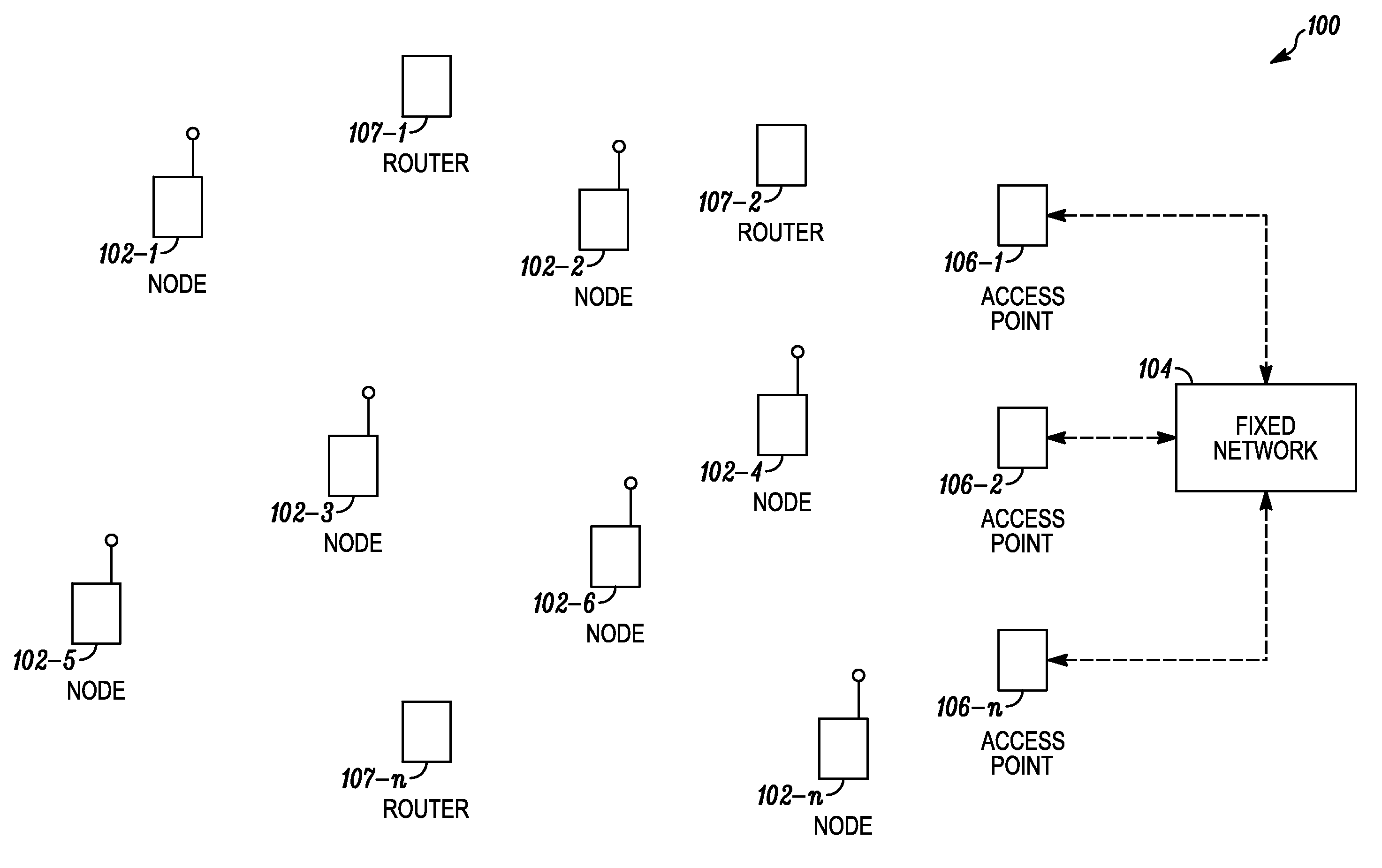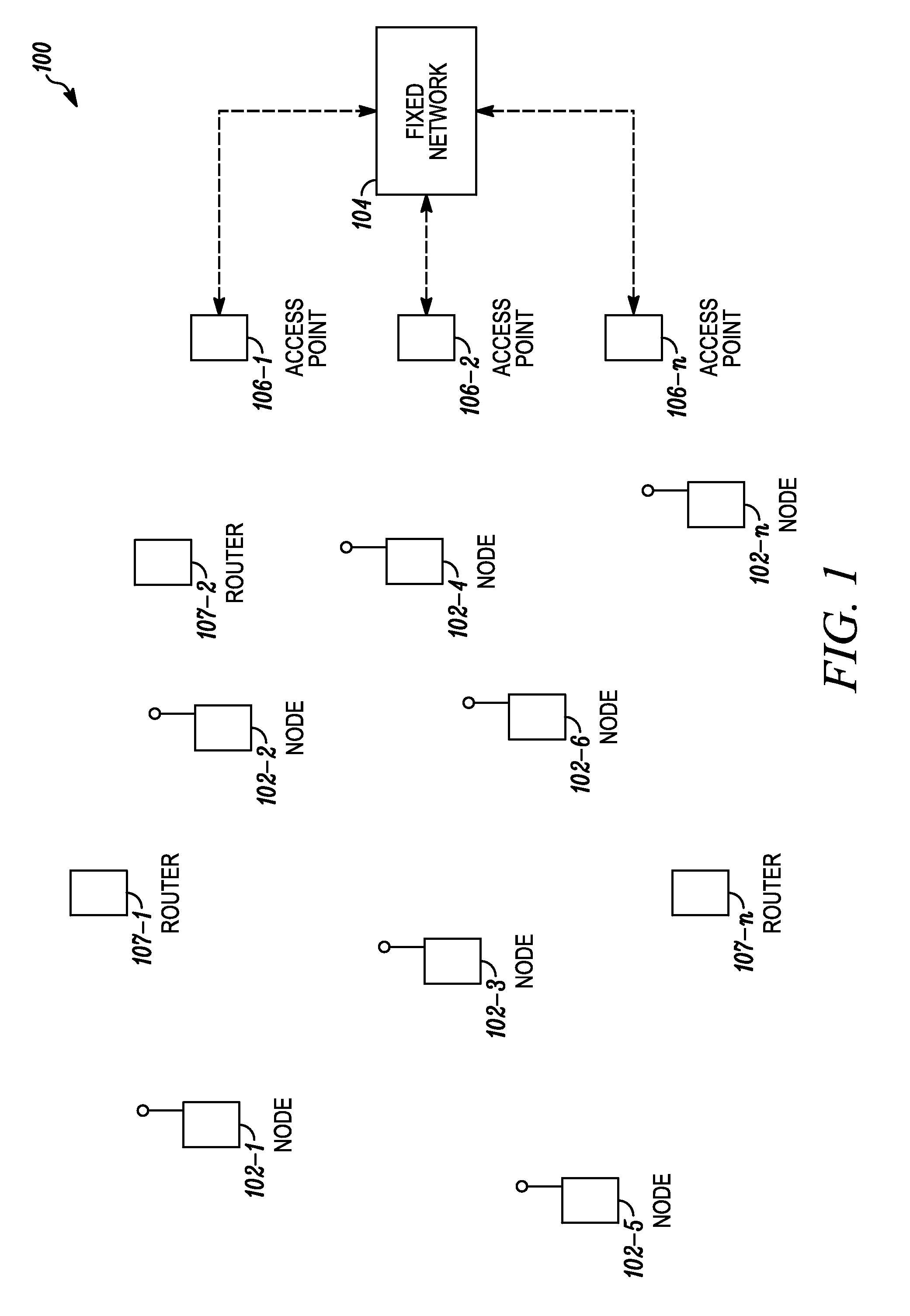Method and apparatus to maintain specification absorption rate at a wireless node
- Summary
- Abstract
- Description
- Claims
- Application Information
AI Technical Summary
Benefits of technology
Problems solved by technology
Method used
Image
Examples
first embodiment
[0031]In the present invention, depending on the integrated power over some predetermined window, the MAC protocol allows automatic transmission control protocol (ATP) to increase or decrease transmission power level P to maintain SAR at or below acceptable levels. The functions of the ATP include calculating the appropriate power level for unicast and broadcast transmissions. The library of functions comprising the ATP keeps track of the local neighbor nodes and required power levels, and provides this information to the logical link control when called.
[0032]If communication is not possible within a predetermined maximum integrated product of time and power without exceeding maximum limit, then transceiver duty-cycle is reduced. In this case, duty-cycle is defined as the fraction or percent of time per interval that the transceiver 108 is transmitting, and can be determined according to equation (3) below.
[0033](totalon-time)-(totaloff-time)totalon-time(3)
[0034]In such...
second embodiment
[0036]Additional details of source-based time averaging and specific absorption rates may be found in 47 CFR 2.1091, referenced above. Specifically, current FCC rules state time-averaging provisions may not be used in determining typical exposure levels for devices intended for use by consumers in general population / uncontrolled environments. However, “source-based” time averaging based on an inherent property or duty-cycle of a device is allowed. An example of this is the determination of exposure from a device that uses digital technology such as a time-division multiple-access (TDMA) scheme for transmission of a signal. In general, maximum average power levels must be used to determine SAR compliance. the present invention presented here uses a MAC protocol which is adapted to control the duty cycle of the RF transceiver and guarantee that maximum transceiver “on-time”, that is t1−t0 as shown in equation (2), is not exceeded in a predetermined period to maintain SAR at or below a...
third embodiment
[0038]In the present invention, the ATP may be used to adapt modem data rate and spreading factor depending on how much power-time product over integration period is below the maximum limit. The ATP can lower the data rate while maintaining the link when the power-time product in a window is otherwise going to be exceeded. To achieve this, the embodiment increases the spreading factor and lowers RF power. The information of power-time product can be used by MAC protocol in prioritizing traffic.
[0039]The embodiment described above may be used to “back-off” transmissions in time if duty-cycle limit is otherwise exceeded. Also, contention resolution back off can be a function of power-time product in a time window. The embodiment also uses ATP to adjust data rate and transmission power based on integrated transmit energy (SAR) in a time window. Logic may be included at each node to switch the RF transmitter 108 off if the integrated energy (SAR) limit is otherwise exceeded. In this cas...
PUM
 Login to View More
Login to View More Abstract
Description
Claims
Application Information
 Login to View More
Login to View More - R&D
- Intellectual Property
- Life Sciences
- Materials
- Tech Scout
- Unparalleled Data Quality
- Higher Quality Content
- 60% Fewer Hallucinations
Browse by: Latest US Patents, China's latest patents, Technical Efficacy Thesaurus, Application Domain, Technology Topic, Popular Technical Reports.
© 2025 PatSnap. All rights reserved.Legal|Privacy policy|Modern Slavery Act Transparency Statement|Sitemap|About US| Contact US: help@patsnap.com



